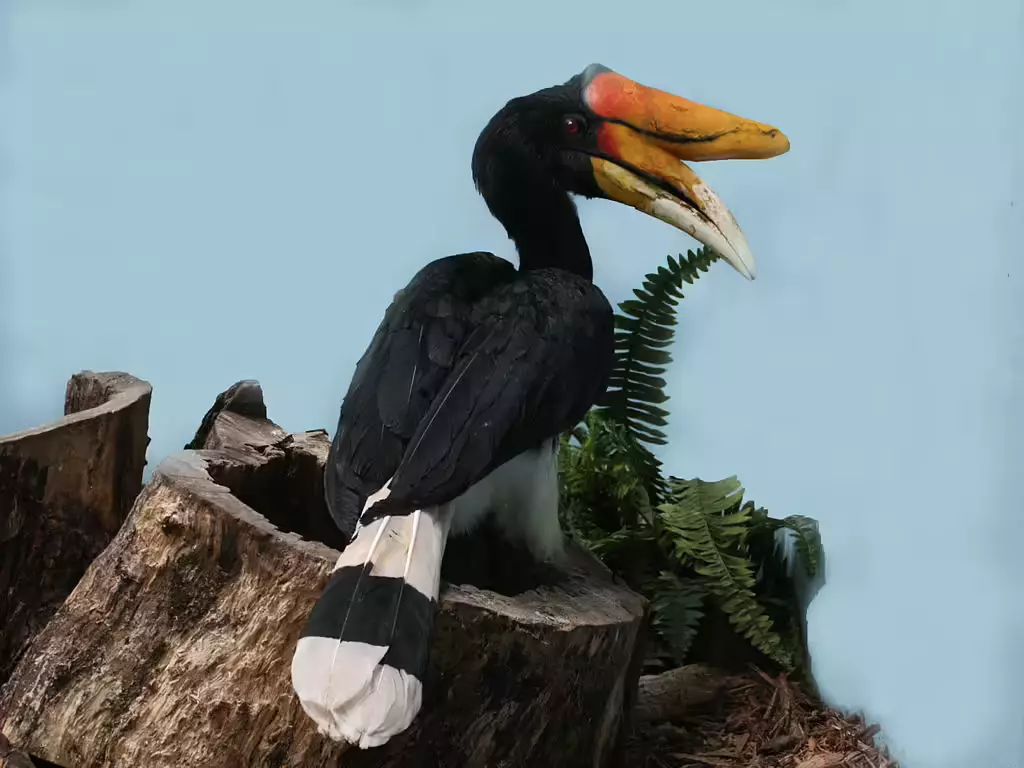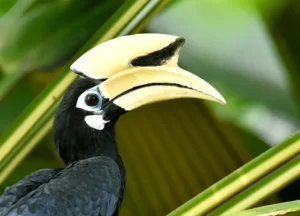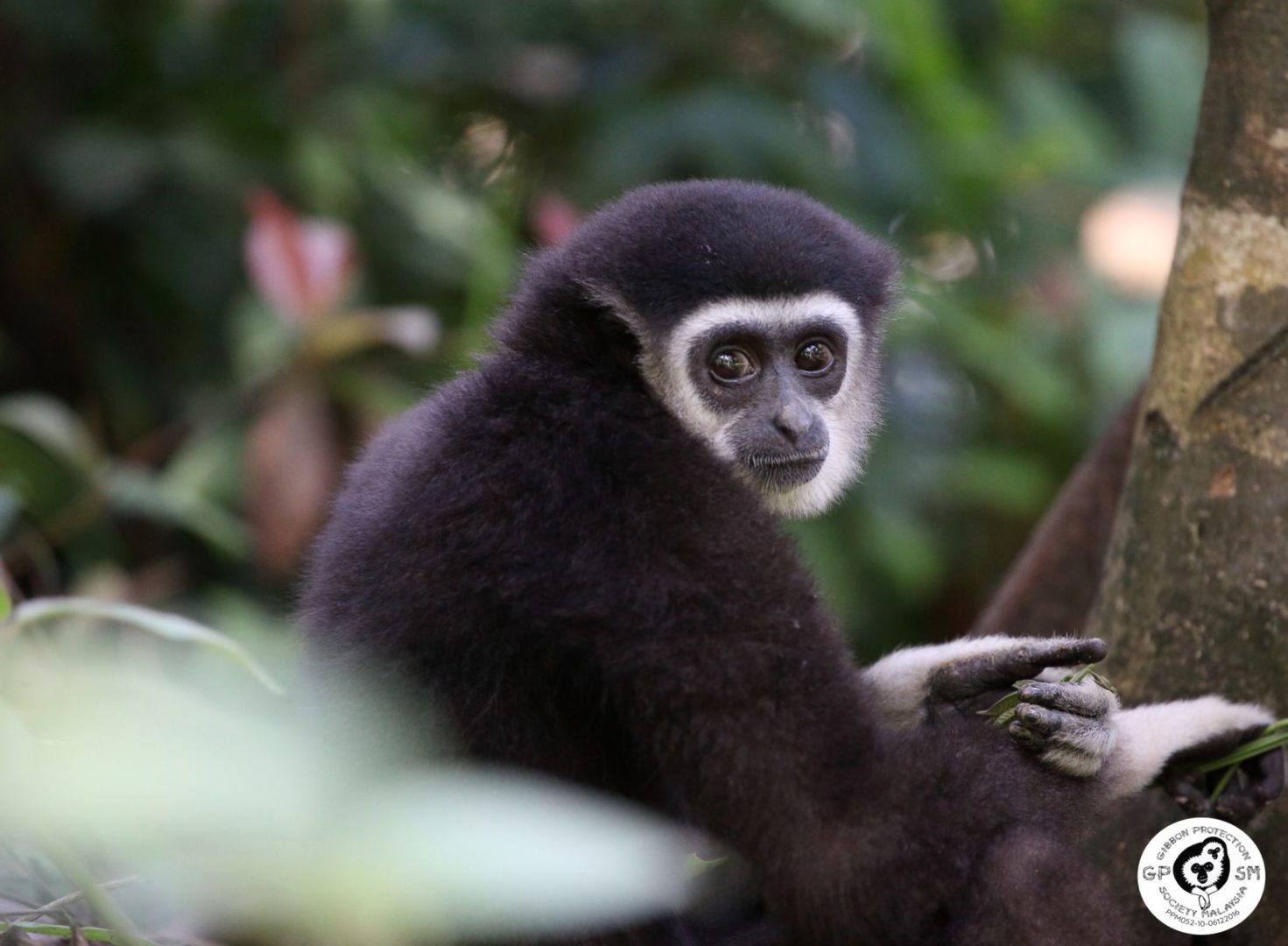In the heart of Malaysia's lush jungles, a silent struggle for survival is unfolding. The…

EcoTravel guide: Hornbills of Malaysia
3.
EcoTravel guide: Hornbills of Malaysia
My first encounter with one of the hornbills of Malaysia was in a fragmented forest, deep in the heart of Merapoh. Here, I was tasked with observation and data collection on the nesting behaviour of the Rhinoceros Hornbill. This is where I spent days with my colleague trying to hide our identity and to figure out why the male hornbill did not approach its nest. In the end, we failed what we had set out to do, but we learned a valuable lesson – to experience and realise that the Rhinoceros hornbill is one of the most intelligent, caring and majestic bird species of Malaysia.
What makes hornbills unique?
So, what is the first thing you notice when you see a hornbill? Most probably, its long, curved beak and a bright casque – an enlargement on top of its beak. The long, curved beak is actually very useful for snatching and subduing prey, or picking figs and seeds from trees. However, the purpose of the casque remains contentious, albiet they are probably used to recognise a mate or augment vocalisation, since they are hollow or spongy, except in the Helmeted hornbill. This species has a solid casque, which is also used as a weapon when fighting against rival males.
The Helmeted hornbill crisis
Sadly, the uniqueness of the casque in the Helmeted hornbill is also a cause for concern. In the last nine years, their population has rapidly declined and has been decimated due to a high demand for their casque. This is valued around US$1000 in the black market in China. The hornbill casque is used to make carved jewellery and ornaments for decorative purposes.
In response, the International Union for Conservation of Nature (IUCN) revised the conservation status of Helmeted Hornbill from Near Threatened to Critically Endangered. Also, wildlife agencies and conservation authorities in SE Asia are enforcing stricter rules and tougher punishment, along with devising conservation strategies and action plans to address this issue.
The 10 hornbills of Malaysia
Whilst the Helmeted hornbill has highlighted the poaching crisis for this particular species, it is too easy to forget that Malaysia, including Malaysian Borneo, is home to other nine species of hornbills, which are also affected by similar human activity and habitat loss. Currently, there are 10 species of hornbills found in Malaysia:
- Rhinoceros hornbill (Buceros rhinoceros)
- Helmeted hornbill (Rhinoplax vigil)
- Oriental pied hornbill (Anthracoceros albirostris)
- Black hornbill (Anthracoceros malayanus)
- White-crowned hornbill (Berenicornis comatus)
- Bushy-crested hornbill (Anorrhinus galeritus)
- Wreathed hornbill (Rhyticeros undulatus)
- Wrinkled hornbill (Rhyticeros corrugatus)
- Great hornbill (Buceros bicornis)*not found in Malaysian Borneo
- Plain-pouched hornbill (Rhyticeros subruficollis)*not found in Malaysian Borneo
Although it may seem doom and gloom at times, not all hope is lost for these magnificent hornbill species and for the Malaysian wildlife. Over recent years, there has been a big shift in Malaysian public opinion and participation in favor of protecting their home and their wildlife. Also, Malaysia is still one of the top bird-watching destinations in South-East Asia. This brings much needed revenue to support wildlife conservation efforts and wildlife awareness at this critical local level.

A Rhinoceros Hornbill has a versatile long, curved beak, which can be used for various purposes from foraging for food to building a nest.
Hornbill watching in Malaysia
So, if are interested in Hornbill watching, or just bird watching in Malaysia, here are few places that you might want to consider in your itinerary.
Tasik Kenyir, Terengganu is the largest manmade lake in Southeast Asia, surrounded by lush rainforest which hosts a diverse range of plant and animal species. Here, you can observe 9 hornbill species, except the Plain-pouched hornbill.
Hornbill Valley, Taman Negara, Pahang – If you prefer to stay away from tourist destinations, the Hornbill Valley is a suitable, quiet location for Hornbill watching as it is only frequented by local birdwatchers. Here, you can observe the Rhinoceros and Wrinkled hornbills, along with the Critically Endangered Helmeted Hornbill.
Royal Belum State Park, Perak is one of the most important protected areas in Malaysia. It ranges over 454 square miles filled with lush green forest hosting a diverse range of insects, birds, and mammals. The park is also believed to be one of the world’s oldest rainforest, dating back over 130 million years. And it is recognised as an Important Bird and Biodiversity Area (IBA). Hence, it is not so surprising that you can observe all 10 species of hornbills, along with over 300 bird species, including rare and endangered species.

Royal Belum State Park by boat. [Photograph by Evelyn Tai, distributed under a CC-BY 4.0 license]
Apart from these recommended areas, there are several other amazing bird watching places. We would recommend Ulu Muda Forest in Kedah where our famous Wild Elephant Safari takes place. The project guides are also expert birdwatchers! Finally, of course, Sabah and Sarawak in Malaysian Borneo offer havens for wildlife and birds including hornbill species.
And, lastly, my personal advice from experience is to always carry a handy bird guidebook, just in case. You never know which fine bird species you may encounter during your Malaysian bird watching trip.
Featured photo credit: Sandy Cole, distributed under a CC-BY 3.0 license




